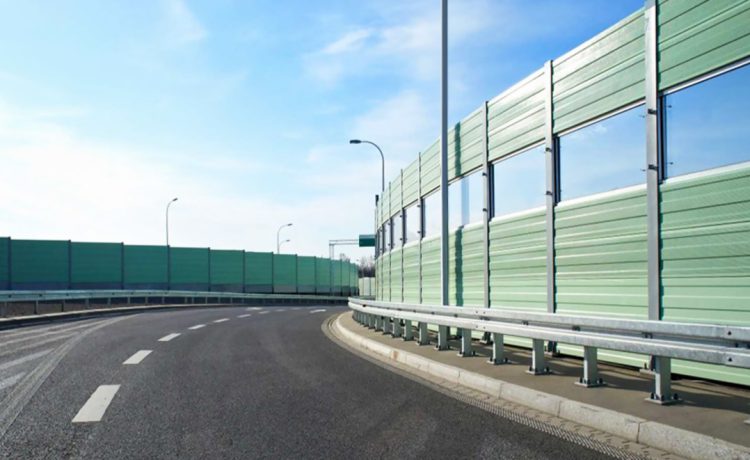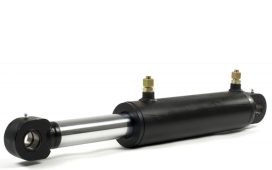Have you ever stood near a noise barrier and thought, Is this thing even working? You’re not alone. While some barriers effectively reduce sound, others seem to be nothing more than oversized fences that barely make a difference. The frustrating part? Many of these barriers should work, but they don’t, often because of one overlooked factor.
So, what separates a successful sound barrier from one that completely fails?
1. How Sound Barriers Work
Sound barriers function by blocking, absorbing, or deflecting sound waves. The key principles behind their effectiveness include:
- Height and Placement – A barrier must be tall and strategically placed to block the direct path of sound waves.
- Material Composition – Dense, sound-absorbing materials like concrete, acrylic, or specialised acoustic panels perform better than thin, hollow structures.
Surface Texture – Rough or porous surfaces help dissipate sound rather than reflect it. - Structural Integrity – Even minor flaws in construction, such as cracks or weak points, can reduce a barrier’s effectiveness over time.
2. The Common Reasons Why Sound Barriers Fail
Despite good intentions, many sound barriers fail due to:
A. Incorrect Height
One of the biggest mistakes in sound barrier installation is making them too short. If a barrier doesn’t completely obstruct the line of sight between the noise source and the receiver, sound waves will simply travel over it, rendering it ineffective. Ideally, the height should be determined based on the frequency and direction of the noise source.
B. Poor Material Choice
Not all materials absorb or block sound efficiently. Some barriers are built with lightweight or non-porous materials that reflect rather than absorb noise, amplifying the problem rather than reducing it. A sound barrier should have a high Sound Transmission Class (STC) and Noise Reduction Coefficient (NRC) rating to be effective.
C. Gaps and Openings
Even small gaps or improper seals between panels can allow noise to leak through. Barriers must be continuous and free of openings to function effectively. Poor installation or maintenance over time can lead to small separations that reduce the overall effectiveness.
D. Improper Placement
A sound barrier must be as close to the noise source as possible. Placing it too far away reduces its effectiveness, allowing sound waves to bend and travel around it. Additionally, barriers placed on uneven terrain can allow noise to slip through gaps at ground level.
3. The Hidden Factor: Absorption vs Reflection
The real secret to an effective sound barrier isn’t just blocking sound—it’s absorbing it. Many barriers are designed to reflect noise, which can create secondary noise problems in surrounding areas. Instead, using sound-absorbing materials like acoustic panels, perforated metal with insulation, or vegetative barriers can dramatically improve noise reduction.
How Reflection Worsens Noise Issues
Reflective barriers simply bounce sound waves off their surface, redirecting them to another location rather than reducing their intensity. This can create new noise pollution issues for areas that were not initially affected.
The Role of Absorptive Materials
Absorptive barriers, on the other hand, contain materials like mineral wool, perforated metal with backing, or dense wood fibres that capture and dissipate sound waves, preventing them from rebounding into the environment. These materials can significantly enhance the performance of a noise barrier.
4. What Makes a Sound Barrier Truly Effective?
To ensure success, an effective sound barrier must:
- Be tall enough to block direct sound transmission.
- Use the right materials that absorb rather than reflect noise.
- Be properly sealed with no gaps or openings.
- Be positioned correctly, as close as possible to the noise source.
- Be well-maintained to prevent wear and tear that could compromise its function.
- Be designed with the environment in mind, ensuring that reflected noise does not negatively impact nearby areas.
5. Future Innovations in Sound Barrier Technology
New advancements in materials and design are improving the effectiveness of sound barriers.
Some promising innovations include:
- Transparent Noise Barriers: Using acrylic panels with embedded absorptive layers to reduce visual obstruction while still mitigating noise.
- Solar-Powered Sound Barriers: These barriers double as renewable energy sources while effectively blocking noise.
- Smart Barriers with Noise Sensors: Advanced barriers equipped with real-time monitoring systems can adjust their noise-blocking properties based on environmental conditions.
Conclusion
At the end of the day, a sound barrier is only as good as the thought put into it. If it’s too short, made of the wrong material, or full of gaps, it’s just a wall, not a noise solution. The real secret? Absorption matters more than just blocking sound.
So, whether you’re planning a noise barrier for a highway, a construction site, or your backyard, keep these factors in mind. A little extra planning goes a long way in making sure your barrier doesn’t just stand there—it actually does its job. And with new innovations on the horizon, the future of noise reduction is looking quieter and smarter than ever!







